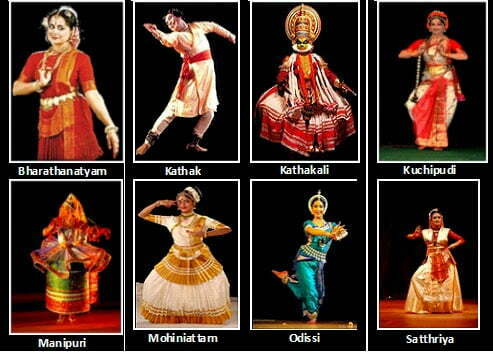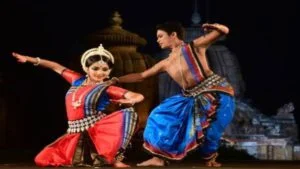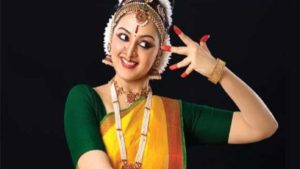Kuchipudi dance is a vibrant dance form which originated in Andhra Pradesh. It is one of the eight classical dance forms in India. This dance form is known because of its fast moves, lively eye expressions, hand gestures and so on. It is a mixture of the laya of the Tandava dance form and of the Lasya or the slow movement in dance speed. The unique concept of the dance form is that the brass plate is moved in accordance with the Carnatic music. The Kuchipudi dancer should also possess the additional quality of knowing the Telegu and Sanskrit language so that they can understand the texts of this dance.
- Origin of Kuchipudi Dance
- A brief history of Kuchipudi Dance
- Difference between Kuchipudi and Bharatanatyam Dance forms
- Purpose of Kuchipudi Dance
- Kuchipudi Instruments
- Who is the God of Kuchipudi?
- How long does it take to learn Kuchipudi?
- Various Kuchipudi Dance Styles
- Kuchipudi Costumes
- Tarangam and Kavutvams in Kuchipudi
- Closing comments about Kuchipudi
Origin of Kuchipudi Dance
This dance form originated from the village in Krishna district in Andhra Pradesh. This also is known to have named after a village of Andhra Pradesh Kuchelapuram and is 65 km away from Vijayawada. At that time this dance was performed by the Brahmins of these villages.
Please read this to know more details on the origin of the dance form.
A brief history of Kuchipudi Dance
Like other classical dance forms, this dance form is also taken to have emerged from Natya Shastra. This also constitutes of the three components of Nritya, Nritta and Natya. This text constitutes of almost 6000 verses.
This dance form is also said to have evolved from the bards who used to move from one place to other reciting poems, spiritual texts and also from the Hindu temples. Its trace can be seen back from the 10th and 15th centuries in copper inscriptions of Machupalli Kaifat.
The modern form of this dance can be credited to the sage Tirtha Narayan Yati and his son from the 17th century. This dance form started to get associated with Vaishnavism and the songs and dances which were on the life of Krishna. Previously this dance form was mainly performed by only male troupes.
Difference between Kuchipudi and Bharatanatyam Dance forms
The main points of difference are as follows:
- While Kuchipudi originated in Andhra Pradesh, Bharatanatyam originated in Tamil Nadu. Although both the dances originated in South India yet their places are entirely different.
- The dance form was traditionally performed by the males, the dance form-Bharatanatyam was traditionally performed by females in temples and religious places and also in king’s courts by females who were called the devadasi.
- Kuchipudi was mainly spread by the bards who wrote poems, on the other hand, the Bharatanatyam was performed and got spread from temples and courts of various kings.
- The dance was actually performed on the verses which were sung as odes to Lord Krishna while Bharatanatyam was performed on varied Mythological texts. Bharatanatyam includes the mythologies of Ramayana, Mahabharata and so on.
Purpose of Kuchipudi Dance
The purpose of this dance drama is to perform the dance in an expressive and vibrant manner. It does not only include dance but one of the most important components of the dance form is Vachikavinayam and involves drama as well. This dance is mainly done to depict the life stories of Lord Krishna. It expresses the dance through the Samyukta and Asamyukta Hastas, Karana, Chari, Angahara, Mandala and so on. The main aim of the dance is to depict slokas through the various gestures, expressions and body movements.
Kuchipudi Instruments
The musical instruments which are used in Kuchipudi dance are actually the ones associated with Carnatic music. They are the Mridangam, Saraswati Veena or the South Indian Veena, the Manjira, Sarpeti, the Tanpura, Violin, and Kanjira.
Who is the God of Kuchipudi?
Siddhendra Yogi is considered to be the pioneer of the dance form. Popular Kuchipudi dancers include Vedantam Narayan Narayana Shastri, Chinta Krishnamurthy, Tadepalli Perayya. These were the famous dancers of traditional Kuchipudi. In modern India, both males and females perform this dance. The best contemporary Kuchipudi dancers include Raja and Radha Reddy, Bhavana Reddy, Yamini Reddy and so on.
How long does it take to learn Kuchipudi?
It needs seven to ten years to master this dance drama completely. Any classical dance has specific postures, movements, hand gestures and expressions to be learnt. It also involves a rigorous practice to master the dance which is performed in various laya and along with music and beats.
https://learn.humsa.com/classical-dance/the-best-kuchipudi-dancers-in-india/
Various Kuchipudi Dance Styles
This dance form constitutes of various styles which are called the “Banis”. This adds to the exclusiveness in this dance form. This dance form is divided into Margi style which is a traditional one. The traditional style, Margi, includes Vedayata, Veddangam, Bommalata, Perani, Chindu, Bahurupam, Pagativeshalu. On the other hand, the modern style or the Desi style includes Rasaka, Charchari, Bhandika, Kollata.
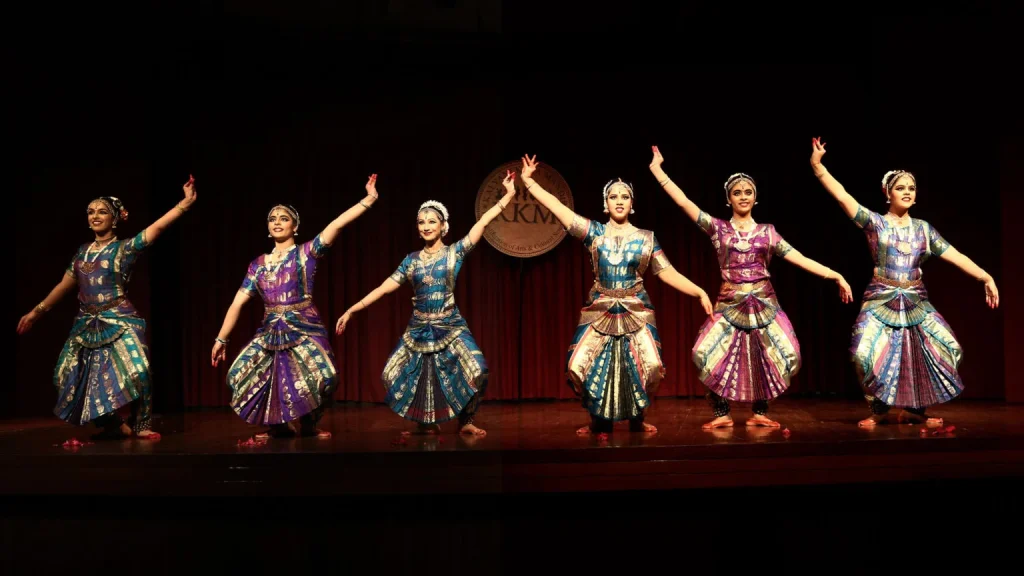
It was also divided into two other types which are Nattuva Mela and Natya Mela. The Nattuva Mela has subtypes which are known as the Balipitha dance and the Kalika dance. Natya mala constitutes of a ritual dance of gods, Kalika dance and the Bhagavatam dance.
Kuchipudi Costumes
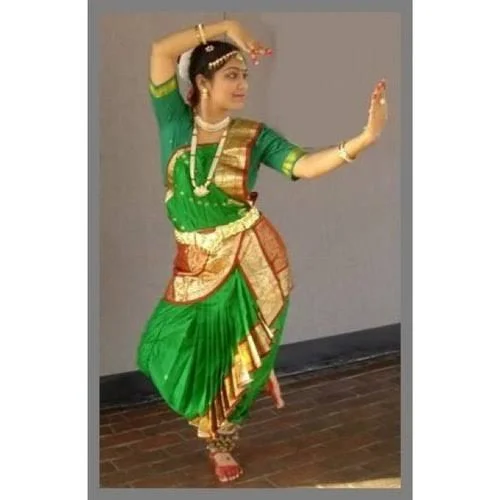
The dance form was previously only for males who used to wear the Agnivastra which included a dhoti. The dress of males was also called Bagalbandi. Women mainly wear a colourful and vibrant saree and dress similarly as in Bharatanatyam. It also includes a fan-like pleated cloth in front to make the dress look more gorgeous with body movements. The dress also includes a belt which is worn in the waist by the females. The jewellery is also quite elaborate with necklaces, armlets, bracelets, earrings, hair accessories and so on. Adding to that ankle bells are also worn.
Tarangam and Kavutvams in Kuchipudi
Tarangam is a dance in Kudipudi whereby the dancer performs the dance on the edges of a brass plate with a pot on their head. This pot consists of water and is considered to be a form of meditation in this dance form.
Kavutvams include the Nritya in the dance whereby acrobatic moves are performed in Kuchipudi.
Closing comments about Kuchipudi
Kuchipudi constitutes of a dance form which is unique in its styles. It consists of a lot of types and styles in it which needs to be learnt with proper guidance and regular practice. This dance form is exquisite and vibrant and adds to the greatest classical dance forms performed in India.
Share with your friends
